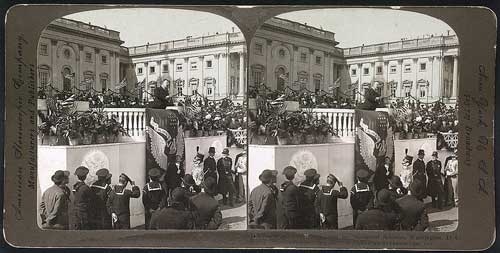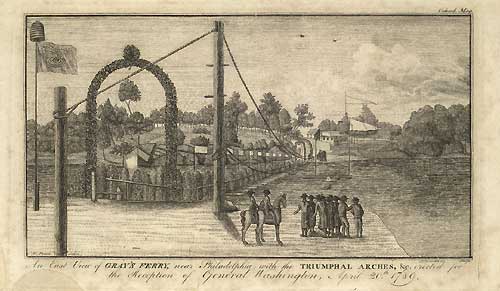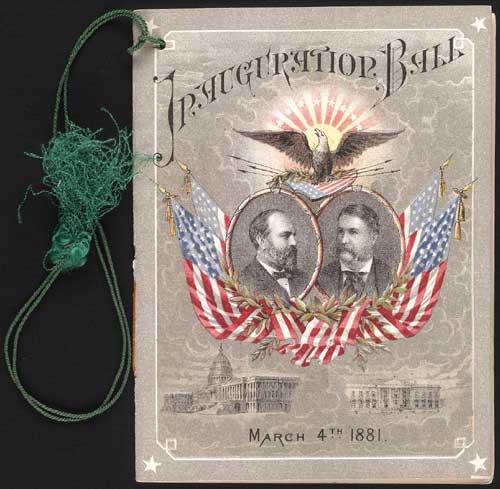 Lance Gay Scripps Howard News Service January 10, 2005
The Constitution provides only one requirement: that the new president swear an oath of office. But presidents set precedents, and Donald Kennon, chief historian of the United States Capitol Historical Society, said other traditions have grown and proliferated through time. This month's performance will feature no less than 20 major inaugural events supervised by three separate inaugural committees. They are responsible for sponsoring one congressional lunch, three candlelight dinners, nine balls and parades with representatives from across the country and around the globe. "It's easy to dismiss this as just another example of style over substance," Kennon said. "But style is substance in this case, with all three branches joining in this quadrennial ritual of renewal and affirmation." Kennon said that as inaugurations go, Bush's second swearing-in actually looks like it will be a subdued affair - even though planners say they expect to spend more than $40 million on the daylong fete.  (SHNS photo courtesy Library of Congress)
James Goode, a Washington historian, agreed the extravagance of that inaugural hasn't been matched. "It was the most incredible one ever held. The Democrats hadn't been in office for years and it was their chance to celebrate - and they did," Goode said. "It was just a wonderful happening." Marvin Kranz, a historical specialist at the Library of Congress, said there was no precedent for George Washington to follow in 1789 for his swearing-in. Much of it was made up on the spot, including the first presidential inaugural speech. "I walk on untrodden ground," Washington said later of his new presidential role. His inauguration was supposed to be held March 4, 1789, but a harsh winter delayed convening a quorum of Congress. The date was pushed off until late April. Washington took his own time riding from his home in Mount Vernon to New York, through triumphal arches the new Americans built for him. He arrived in New York on a grand barge that was rowed across Newark Bay from New Jersey.  (SHNS photo courtesy Library of Congress)
Kranz said lawmakers searched nearby buildings and returned with a Masonic Bible, which was put to the service. The 35-word oath inscribed in the Constitution: "I do solemnly swear that I will faithfully execute the office of President of the United States and will, to the best of my ability, preserve, protect and defend the Constitution of the United States." President Washington added the words, "So help me God," and kissed the Bible, a custom followed by every president since, except John Quincy Adams. Adams used a volume of constitutional law. Washington also established the tradition of the inaugural speech; his second inauguration set the record for the shortest inaugural speech ever - 135 words. The first presidents only gave their speeches to Congress. But a squabble between the House and Senate over allocating guest seats to the event prompted the 1817 inauguration of James Monroe to be moved outside. With the capital of the new nation moved to Washington, Thomas Jefferson was the first president to be sworn in at the Capitol in 1801, walking to the site of the new Senate a few blocks from his boarding house, where he returned later for dinner. At Jefferson's second inauguration, he rode on horseback the 16 blocks from the Capitol to the President's House (the name then used for the White House) amid music and a spontaneous gathering of mechanics from the nearby Navy Yard - a military procession that grew into today's Inaugural Parade. Jefferson also began the tradition of the Inaugural Open House. The Executive Mansion was opened to all who wished to greet the president after his swearing-in. Andrew Jackson was forced to jump through a window in the White House to escape a mob of well-wishers who stormed the building, ruining furniture and breaking china in their eagerness to see him.
Goode, the Washington historian, said the longest parade was that for Abraham Lincoln in 1865, celebrating the end of the Civil War and lasting two days. Four viewing stands were built along Pennsylvania Avenue, and the first day featured crack troops from a well-provisioned Army of the Potomac. The second day featured elements of front-line troops who showed up in ragged war uniforms with flags showing holes from the fighting.  (SHNS photo courtesy Library of Congress)
The longest parade was in 1953. The event for Dwight Eisenhower featured elephants, dog acts, trained seals, 73 bands and 59 floats, including one carrying a replica of the cottage in which he was born. Parades have since been limited to 15,000 participants. Pentagon planners vow to keep this year's parade - consisting of 14 floats, 45 marching bands and 48 marching units - to no more than two hours. The capital's fickle weather plays an unpredictable role in inaugural history. Kranz, of the Library of Congress, says William Harrison gave the longest inaugural speech ever - a harangue of 8,445 words lasting two hours - on a cold and wet day. Harrison refused to wear a hat, and a cold that turned into pneumonia killed him six weeks later. Record cold hit Washington for Ulysses Grant's second inauguration in 1873; midshipmen standing at attention on the Mall without overcoats collapsed. Grant's inaugural balls were held in an outdoor tent that was so cold that champagne froze, dancers refused to take off their coats and canaries put in the rafters froze and dropped among the revelers. Freezing weather also drove Ronald Reagan's 1985 inauguration indoors; the parade was held in a suburban Washington arena. Some early inaugural traditions have been discarded. The first five presidents wore knickers for their swearing-in, and one contemporary account reports that Washington wore "a complete suit of Homespun Cloaths; the cloth was of a fine fabric and as handsomely finished as any European superfine cloth." John Quincy Adams set the tradition of wearing trousers, and formal dress with top hats was the favored dress for more than a century. Jimmy Carter broke this tradition in 1977, opting for a business suit and insisting on walking back to the White House. Four years later, Reagan donned formal attire, but then in 1985 switched to a business suit - the tradition since. Kennon, of the Capitol Historical Society, said today's closely choreographed inaugurations reflect the wishes of presidential myth machines trying to maximize media exposure and set themes future historians can use. He noted that, for the first time, there are two competing visions this year - "Vision of America," proclaimed by the Joint Congressional Committee on Inaugural Ceremonies; and "Celebrating Freedom, Honoring Service," established by the president's official Inaugural Committee.
Distributed by Scripps Howard News Service, http://www.shns.com
|